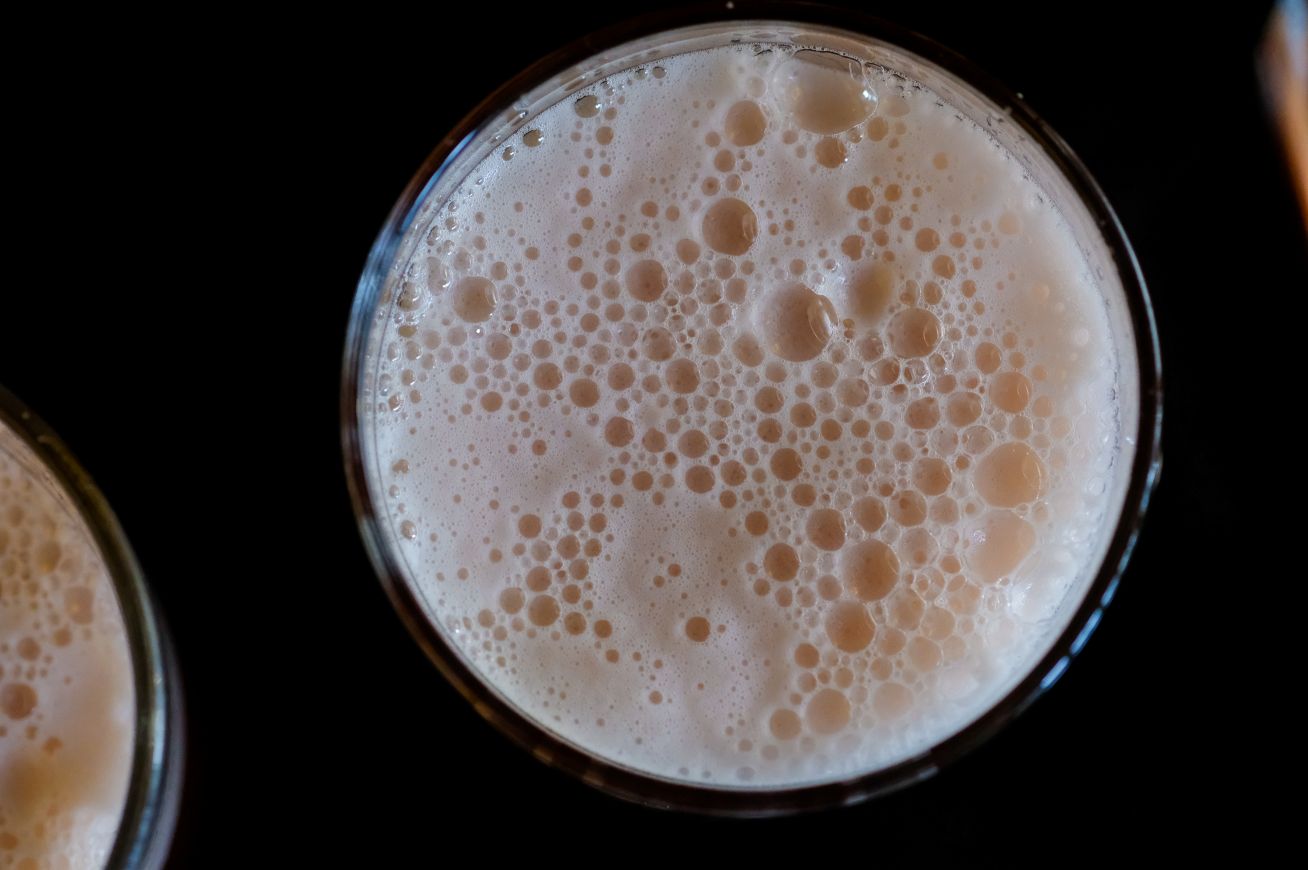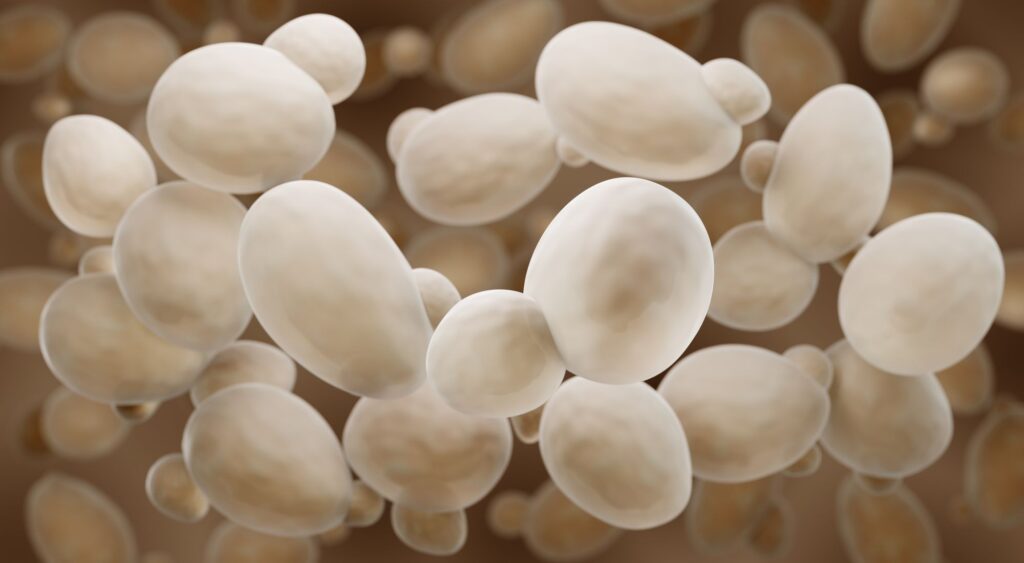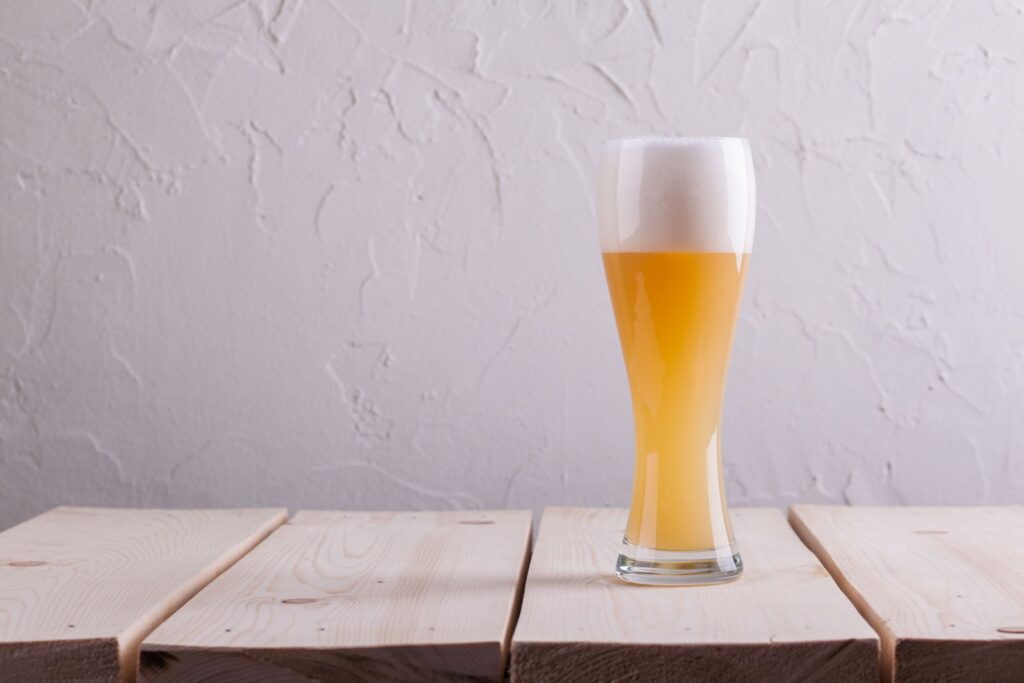
As a yeast expert and a brewer driven by a lifelong curiosity, I have always been fascinated by yeast — the undisputed hero of brewing and baking. Brewer’s yeast is undoubtedly the most important ingredient in the brewing process. It is the invisible but extremely powerful biotechnology miracle that has been used for thousands of years to produce not only beer, but also bread, wine and many other foods.
Despite their microscopic size — just a few microns — brewing yeast perform incredibly complex tasks that influence everything from alcohol content to aroma and flavour. For me, understanding how yeast works is the key to brewing the perfect beer, and I continue to explore its mysteries every day. After all, the fact that such vast and diverse delights can be produced by such tiny organisms is nothing short of extraordinary!

What Does Brewing Yeast Do? The Workaholic Micro-Workers Behind Every Brew Was tut Bierhefe?
Yeast are hard workers in beer. They transform water, malt and hops into something much more than the sum of its parts: a vibrant beverage full of aroma, flavor, and carbonation. At their core, yeast primarily produce alcohol and bubbles, but they do so much more: they generate complex aromas, flavors, and even influence the texture of the beer.
Think of yeast as tiny house builders—building and shaping the final product. They’re microscopic, invisible to the naked eye, and operate on a level most of us can’t see. Yeast are packed with nutrients—proteins, minerals, vitamins—making them nutritional superorganisms. They add layers of nuance ranging from fruity and spicy notes to malty or roasted flavors, depending on the yeast strain and fermentation conditions. This complexity makes yeast fundamental, not just as fermenters but as flavor architects.

The Brewing Dance: How Brewing Yeast Work
Fermentation begins when yeast are added to the wort (which is basically the malt most). This can be done on purpose by the brewer, or it can happen on its own through natural fermentation.
Once in, the yeast starts growing really quickly. At first, they do this without making alcohol, consuming sugars or producing energy, which is a bit like tiny builders putting a house together from building blocks. Slowly but surely, as their numbers reach billions (per milliliter!), they make a surprising change: all of a sudden, they start converting sugars (mainly the maltose) into alcohol, carbon dioxide, and to produce a variety of flavour compounds.
The alcohol content in beer is usually between 4% and 6%, but some yeast strains can produce much higher levels – up to 10% or more! This is especially the case with yeast strains used in special beer styles like barley wines or high-alcohol Belgian ales. I was to hear that some companies have claimed to have produced beers with up to 50% alcohol! Yeast alone can’t do this. I’m sure brewers would have used some clever technology to help them out.
It’s so interesting to see how the brewing industry is also looking into brewing yeasts that are specially made for low-alcohol or alcohol-free beers. These yeasts can create beautiful aromas even when there’s hardly any alcohol produced.
Fermentation is a process that can take a few days, depending on the style, temperature, and other factors. For example, cooler fermentation slows the process down, while warmer temperatures speed it up.
Some brewers even use bottle fermentation, also called secondary fermentation, where the brewing yeast does its work inside the bottle, mainly to create natural carbonation and a slight cloudiness. It’s got a bit of a similar vibe to champagne, so I like to call it the “beer champenoise” method. My personal view is that, despite the due differences, the bubbles produced by brewing yeast in bottle fermentation are as fine as those in champagne!

Yeast are resilient organisms— Sthey can be reused multiple times. In fact, professional brewers often recycle their brewing yeast for up to seven generations (basically making up to seven beers), optimizing their use and performance.
But here’s the best part: once they’re done brewing, they can also be dried and used as animal feed for example for the cows. This not only keeps the waste to a minimum but also helps moving towards more sustainable and eco-friendly practices.
A traditional extract derived from yeast at the end of brewing is an excellent example of how yeast can be reused smartly. A German scientist, Justus von Liebig, invented it and it is extremely popular in Anglo-Saxon countries. It is a vegan source of B vitamins, including supplemental vitamin B12. Spread it very thinly on buttered toast – that’s the traditional method. It is one of those things that you either love or hate.
It’s also great to see some innovative companies extracting valuable components from brewing yeast, especially proteins called mannoproteins. These are being used for all sorts of things, like nutritional supplements, dietary products, and even for making wine. You might not know that these tiny organisms have another super important job! As well as brewing, they help us stay healthy and nourished in so many ways.
Beyond their fundamental role, brewing yeast also adds distinctive features that define different beer styles. Take Weizen (German wheat beer), for example. The lovely, fruity flavour, reminiscent of banana, is thanks to the yeast, and the phenolic notes, which are similar to clove, are typical of many Belgian wheat beers.
In Belgian Witbier, the yeast adds a subtle zing of spice and a touch of citrus, which really brings out the aromatic complexity. When it comes to beers like IPAs and other hop-forward styles, yeast often takes a more subtle role, adding a neutral or slightly bread-like flavour that lets the hops really shine.
It is so cool to see how brewing yeast is becoming more and more popular, especially with all these awesome new craft beer innovations. It’s interesting to see how brewers are choosing yeast strains that give these lovely fruity, spicy, or malty notes, even when there’s no alcohol forming. This trend highlights just how versatile and influential brewing yeast are.
They’re not just in traditional beers, but also in all those exciting new experimental styles!

Here at Fermento, our passion for brewing yeast runs deep. Our philosophy is rooted in understanding this tiny organism in all its complexity. As seen on our “Our Story” page, we believe that a profound knowledge of yeast biology and behavior is the foundation for brewing exceptional beers.
Yeast are the true masterminds behind every flavor profile, aroma, and texture we craft. We love yeast not only for what they do in the brewing process but also for how they shape each beer style—from the fruity esters of a Belgian wheat to the roasted richness of a stout.
Thanks to our deep respect and understanding of brewing yeast, we can push the boundaries of brewing, constantly innovating and creating beers that tell unique stories—marking a perfect harmony between science, tradition, and artistry.
Cheers to Yeast!
Reflecting on my journey, I see yeast not just as microorganisms but as tiny, living artists creating magic in every brew. Yeast are the invisible masters of their craft, working their magic in every beer. Over the years, I’ve tested countless yeast strains, observing how they influence aroma, mouthfeel and taste. For me, yeast is more than just a technical tool — it is the true artist behind every beer we brew.
These tiny creatures open up a world of possibilities: they shape complex flavours, add texture and ensure the perfect interplay of taste and aroma. Without yeast, every brewing process would be incomplete, and the diversity we enjoy today would be almost unimaginable.
That’s why at Fermento, we celebrate it not only as a building block of our craft, but as our most important partner. For us, yeast is more than just an ingredient: it is the soul of our beer, the true magician in the brewing alphabet.
Raise a glass to brewer's yeast - our big little heroes!
When I look back on my journey with brewer’s yeast, I remember countless hours of intensive research, experimentation and amazement. I am constantly fascinated by how these microscopic organisms create incredible amounts of aroma, flavour and texture.
They are the invisible heroes that bring flavour creativity to life in every glass of beer. They make the difference in every bottle, in every drink we brew. Without yeast, there would be no diversity, no innovation, no real Craft Beer.
So let’s raise a glass to yeast! For its tireless work that pushes boundaries, refines taste and makes every beer a unique experience. Cheers!